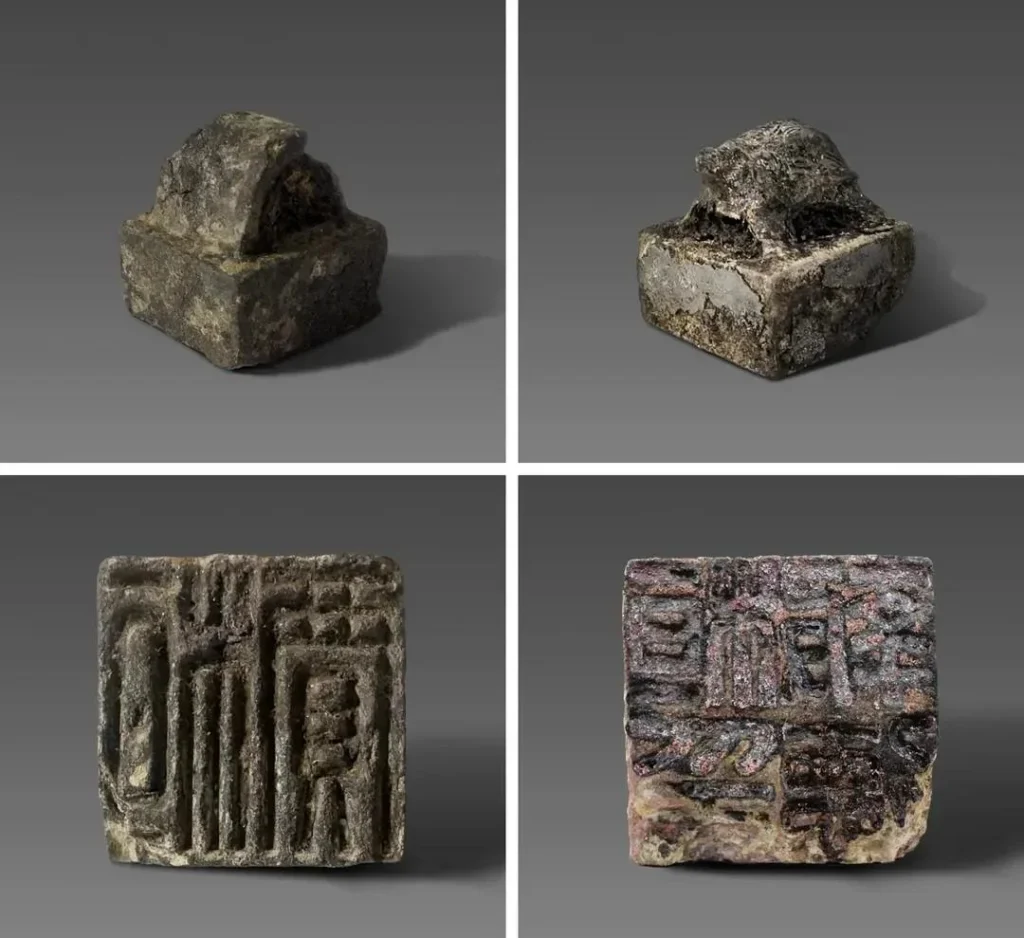Archaeologists in Rizhao, a city located on China’s eastern coast, have discovered three ancient tombs believed to be approximately 1,800 years old, originating from the Han Dynasty. This era, which lasted from 206 BCE to CE 220, is often recognized as a remarkable period in Chinese history. The tombs were found in a cemetery within Rizhao and are part of the Dazhuangzi Cemetery in Shandong Province. The excavation was conducted as part of preparations for expanding a nearby park, spearheaded by the Institute of Archaeology at the Chinese Academy of Social Sciences in collaboration with the Shandong Provincial Underwater Archaeology Research Center.
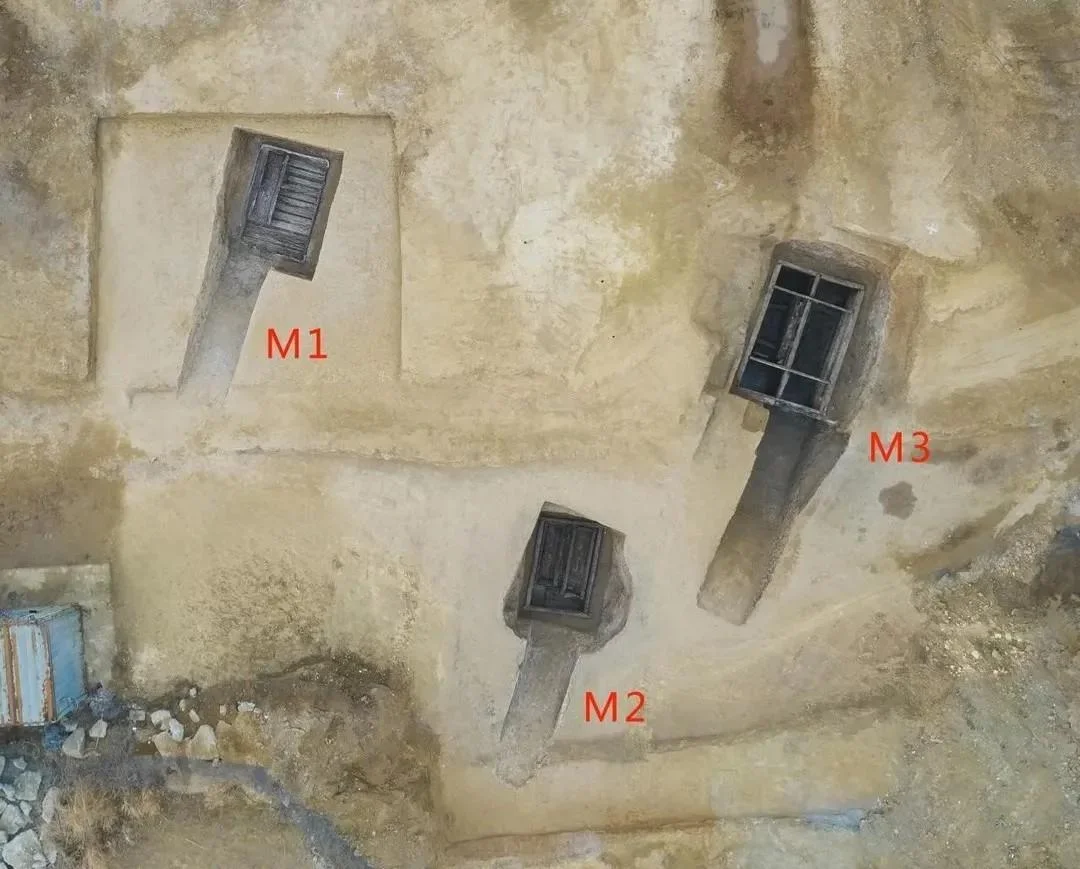
The Dazhuangzi Cemetery is located on the eastern terrace of Dazhuangzi New Village in Hushan Town, within Lanshan District, at the northern base of Aye Mountain, roughly 3.5 kilometers from the Yellow Sea. Initially marked by two earthen mounds, the second mound has suffered significant damage from earlier activities, while the first mound remains largely intact, measuring 50 meters from north to south and 40 meters from east to west.
The three tombs, labeled M1, M2, and M3, are characterized by vertical pit wooden chamber structures with sloping passageways leading to their entrances. Although M1 and M2 were severely looted and largely emptied, M3 was found to be well-preserved. Researchers discovered that two of the tombs contained bronze seals inscribed with the surname “Huan,” suggesting a familial link.
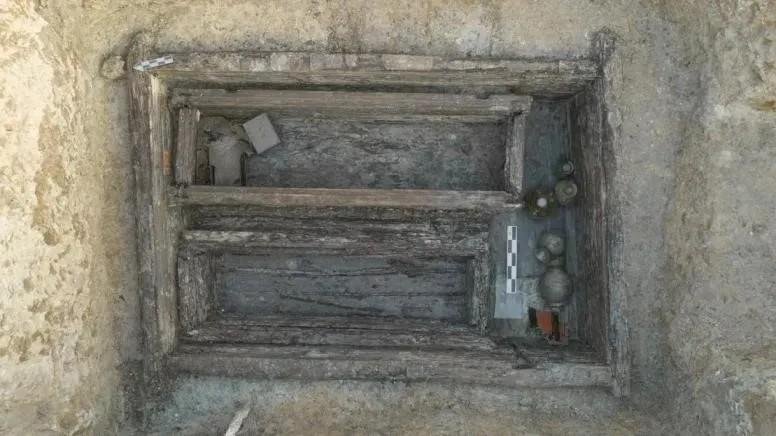
Tomb M1 is 4.2 meters long, 3.5 meters wide, and 2 meters deep but had been extensively looted, leaving only a few funerary items such as a lacquered wooden cup and a glazed pottery pot. The human remains had deteriorated completely, making it impossible to ascertain the specific burial practices used.
Tomb M2, located 10 meters southeast of M1 and shaped somewhat like the character “甲” (jia), measures 4.45 meters in length and also suffered from looting. Artifacts retrieved from this site included a glazed pottery pot, a damaged lacquer table, a bronze seal marked “Huan Jia,” and an iron sword.
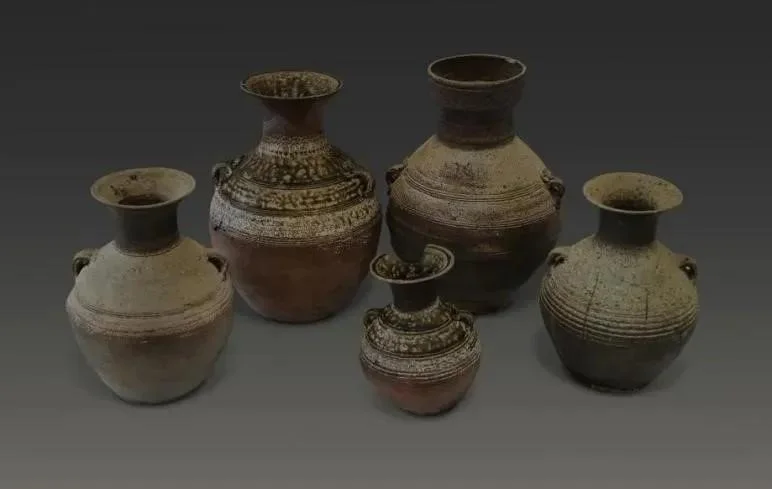
In contrast, Tomb M3, found 15 meters east of M1, remained intact and yielded over 70 artifacts. This tomb features an architectural style resembling a residence, complete with miniature wooden doors and windows connecting two rooms. It seems to have been designed for a husband and wife, though they were likely not interred at the same time. The well-preserved chamber exhibits a double-layered roof comprised of 11 transverse wooden beams on top and longitudinal planks below.
Significant artifacts uncovered from M3 include bronze mirrors, an iron sword, lacquered ear cups, and various glazed pottery items including pots, jars, and flasks, many of which were topped with wooden lids. A notable find was a bronze seal inscribed with “Huan Bao De Yin.”
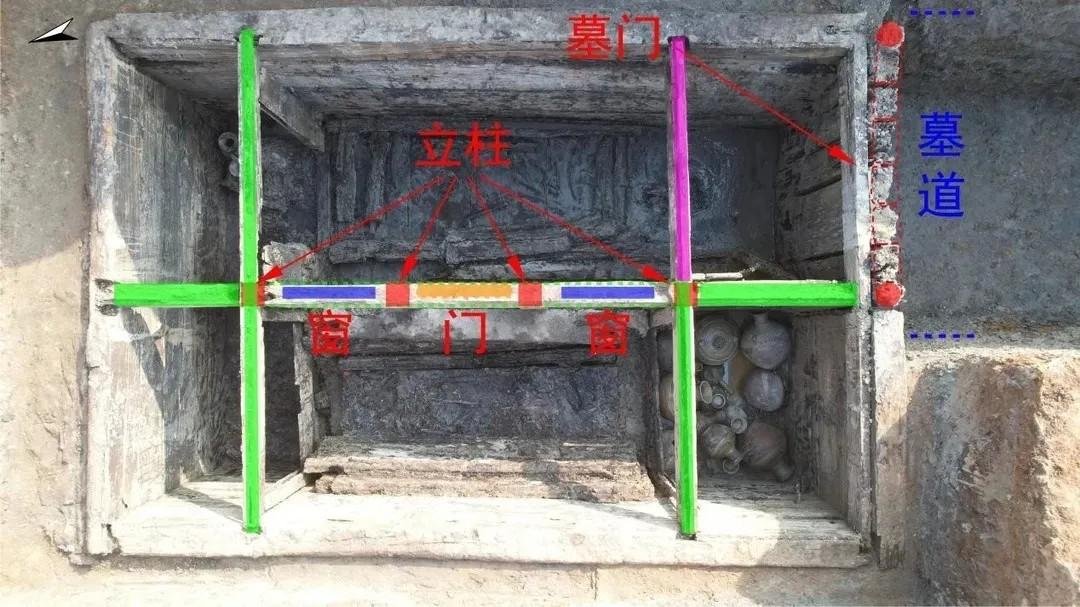
Among the unique discoveries in M3 was the remains of a coffin carriage—a finely crafted structure used for transporting coffins into the tomb—highlighting the elevated status and wealth of the family buried there. The presence of the Huan family name across multiple tombs is considered a rare and important finding by the Institute of Archaeology at the Chinese Academy of Social Sciences.
The excavation took place from December 2023 to January 2024 and involved meticulous exploration and careful excavation of the tombs. The residential aspects of Tomb M3, along with its interconnected rooms and detailed craftsmanship, offer insightful glimpses into the burial customs and cultural influences of that era, reflecting significant ties to the Chu and Wu-Yue regions.
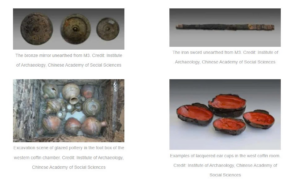
The fundamental design of these tombs features sloping entrance tunnels leading to deep chambers within the mounds, combined with their well-preserved structural elements, making this discovery one of considerable significance in recent archaeological efforts.

